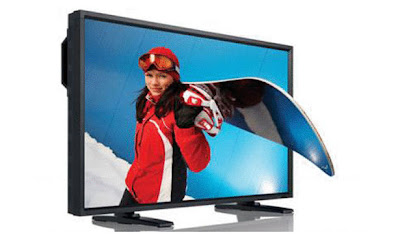The problem facing the three-dimensional TV is the need to wear a three-dimensional vision goggles all the time, but this was overcome in the new TV shows you see the three without the need for glasses
2. samsung flexible screen
Prototype screens AMEOLED suit also flexible Tablet PC, the company is to provide such screens on a commercial scale in 2012.
3. The Stark Hand
The Stark Hand prototype, which was once featured on the cover of Popular Science, is the leading innovation designed by Mark Stark as a help to his friend Dave Vogt born without a left hand. The product is named the “Natural Dexterous Hand” which functions like a mechanical hand and an electronic model. The prosthetic hand is attached to the cable running from shoulder; a lever on the palm can help to open all five fingers at one time and close them individually. The invention even assists Dave Vogt to catch balls and grip wine glasses.
4. Google Prius
Google is testing these days, on Toyota Prius , a software which should allow cars to drive themselves. Apparently, before the actual trip of the intelligent car, a specialist drives along the chosen streets and collect data regarding circulation signs and all the other difficulties. It is only then that the Google Prius starts its drive. However, not by itself; on the driver’s seat, there is a trained person who must take control if needed. Moreover, on the co-pilot seat, there is another expert who permanently verifies the software’s functioning and application. This system, if efficient, should reduce the number o car accidents to a great extent.
5. Martin Jetpack
This device is another this year’ invention which, if effective, will revolutionise the idea of travelling…light! The design was created by Glenn Martin and it is scheduled for release at the end of this year. Apparently, it still needs some work to be done. However, more than 2500 persons have already reserved the gear and are anxiously waiting for Martin to finish working on his jet pack.
6. Flying Cars
This is world’s first flying car. It was designed by students, at MIT and it was developed by a small American company, called Terrafugia. Though the concept of the car was invented in 2006, when it was also rewarded, the first aircraft is about to be released, this is year. It seems that it can be used both as an aircraft and as a car, due to the ability of folding its wings. The driver, or the pilot, depending on how you put it, will need 20 flying hours to learn how to keep this beauty in the sky ad will be able to buy it at a price starting from $ 194,000.
7. The Print Brush
This device was designed by Alex Breton, an engineer in Stockholm, Sweden for a rubber-stamp company. He called his gadget ‘Print Brush’. The smart printer is able to upload images and text from the computer and then print it on any flat surface and a large range of textures: paper, plastic, wood or fabric. This wasn’t easy to achieve.
8. The Medical Mirror
More than a normal mirror, the medical mirror can produce exquisitely detailed individual physiological data thanks to innovative use of facial recognition technology.
9. The straddling bus
This is the bus of the future, created to ease traffic, in a world which becomes more and more crowded. This bus is as high and as wide as to permit cars to drive under it. The straddling bus is not only functional but also attractive and futuristic. It is economica as welll because it uses sun panels placed on the roof. These buses are designed to transport up to 1200 persons and the cost of building one of them, together with the required equipment should be 10 times smaller than that of creating a subway line on the same distance.
10. Dynamically Glare-blocking LCD Sunglasses
These glasses are meant to stop sunlight from disturbing us while driving. Apparently, Chris Mullin was annoyed by the glare which gave him headaches during his daily travel to work and back home. This is when he came with the idea of creating a pair of sunglasses using a unique electronic screen to stop sunlight. This is made out of liquid crystals which are as seen through as any ordinary glass, but its properties may be modified according to the inventor’s desire. In addition, a sensor detects the intense light and instantly sends message to a microcontroller on its location. Further, the liquid crystal acts so as to block the glaze, without modifying visibility.










